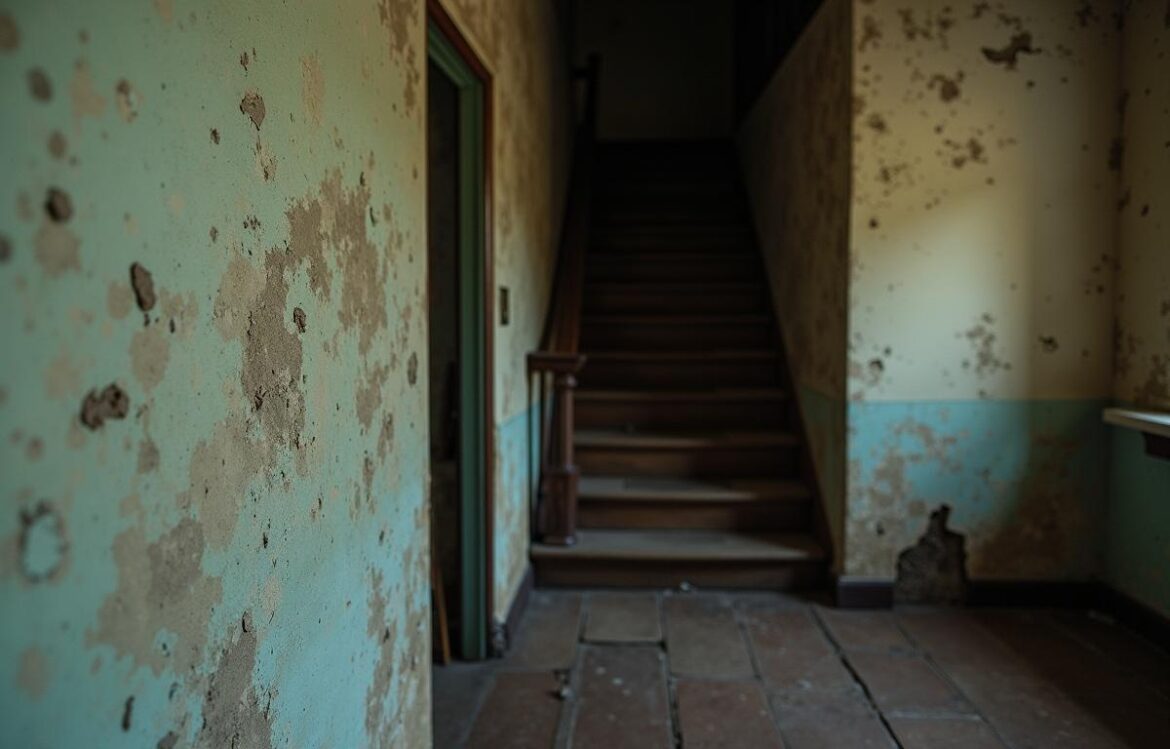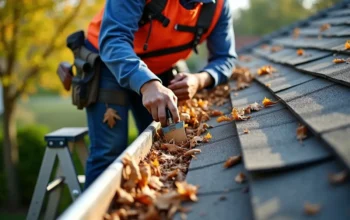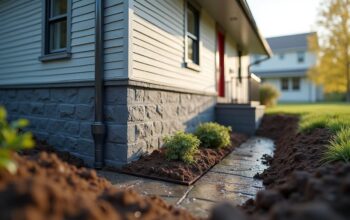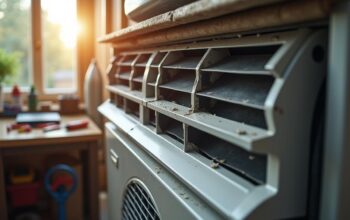
Hidden dangers may lurk in every corner of your home, often going unnoticed until they cause serious problems. Many homeowners focus on visible issues like peeling paint or a creaking staircase but overlook lurking trouble that can impact wellbeing. There are objects, materials, and even invisible forces within your living space that pose bigger risks than you might imagine. By staying informed, you can protect yourself and your family from concealed risks, unseen hazards, and latent threats that might compromise health and safety.
Contents
Potential hazards lurking beneath the surface
Most dwellings contain elements that homeowners rarely think about, which can become covert perils if ignored. Some materials might weaken over time or release dangerous substances into the air. Other issues could remain hidden for years, causing gradual damage. Knowing what to look out for is essential for maintaining a safe indoor environment.
Old insulation and harmful materials
Many older homes contain insulation made with potentially dangerous components, such as asbestos. These masked dangers remain hidden until insulation is disturbed, allowing microscopic fibers to become airborne. Exposure carries long-term health implications. Similarly, certain older paints contain lead, posing undiscovered threats when paint flakes or dust enter living areas. To avoid serious complications, consult a professional to check for these disguised hazards during renovations or routine maintenance.
Mold growing behind walls
Mold thrives in damp, dark spaces, often remaining an invisible risk until it spreads. Basements, attics, and wall cavities frequently harbor mold growth. Spores can trigger allergies, respiratory issues, and more severe health problems. It’s wise to investigate any musty odors or unexplained moisture, since these can be clues pointing to a bigger underlying threat. Addressing mold early helps you avoid structural damage and keeps indoor conditions healthy.
Inconspicuous risks from everyday appliances
Household appliances make life easier, but some carry unknown dangers if not correctly maintained. Even small items can become shadowy dangers when overlooked for too long. Keeping your appliances in good working order and addressing any odd behavior promptly will reduce the likelihood of covert threats.
Potential fire hazards
Clothes dryers, space heaters, and toasters can pose an increased risk of unperceived risks if filters are clogged or wiring is damaged. Dust and lint accumulation in dryer vents is a common cause of house fires. Similarly, old or poorly installed heaters might generate too much heat, leading to concealed hazards. Regular cleaning and inspections help reduce the possibility of undiscovered threats that can catch you by surprise.
Gas leaks and carbon monoxide
Gas-powered appliances like stoves, ovens, and water heaters are convenient but require regular checkups. A small leak can lead to devastating consequences if left undetected. Even more insidious is carbon monoxide, a toxic, odorless gas that causes serious harm almost undetected. Ensuring proper ventilation, installing carbon monoxide alarms, and scheduling professional servicing can help prevent lethal outcomes from invisible perils.
Hidden pitfalls in neglected corners
Home repairs and remodeling tasks often focus on visible issues. However, some of the most severe problems hide in corners people rarely consider. Unnoticed dangers may emerge in attics, basements, and crawl spaces where humidity and darkness meet.
Infrequently visited crawl spaces
Crawl spaces often host rodents, insects, and moisture. Rodents can chew through electrical wires, leading to disguised risks over time. Standing water fosters mold and rot, weakening structural supports behind the scenes. Even slight deterioration over months or years can create major issues that you might not notice until it’s too late. Regular inspections prevent these obscured threats from escalating.
Attic intruders and ventilation problems
A poorly ventilated attic can trap warm, moist air. Over time, this fosters mold, mildew, and even wood rot. Birds, bats, and insects often slip into attics through tiny gaps or vents, potentially causing damage and bringing disease. Checking for small entry points and sealing them resolves stealthy risks before they escalate. Paying attention to airflow reduces the risk of underlying issues that worsen in humid, stagnant conditions.
Covert perils within plumbing and water systems
Even a slow, steady leak can lead to big trouble. Water dripping behind walls encourages mold growth, invites pests, and erodes structural integrity. Faulty pipes or outdated plumbing might seem minor, but when left unaddressed, they become unexplored dangers that drain funds and jeopardize health.
Silent leaks behind walls
Water leaks behind walls frequently go unnoticed for months or even years. Damp spots sometimes appear, or paint starts to bubble, formed by an unperceived risk hiding in the wall cavity. This moisture draws insects looking for water sources and can produce structural instability if rot sets in. Checking your water pressure and monitoring your utility bills can help you spot changes that might point to cryptic dangers.
Hidden contaminants in tap water
If your home’s plumbing is outdated, old pipes can leach contaminants into your drinking water. Corrosion in older pipes poses disguised threats, with particles eventually ending up in water used for cooking and drinking. Installing filters or upgrading your plumbing system can help minimize the impact of any underlying threats that compromise water quality. Analyzing your home’s water and seeking professional advice can help you address any issues at their source.
Unseen hazards in household chemicals
Cleaning agents, pesticides, and paint thinners often store well out of sight. However, these products contain strong chemicals that must be handled carefully to avoid secret threats. If you accidentally mix incompatible substances or neglect proper ventilation, you may face serious health issues.
Toxic combinations
Some household products contain volatile organic compounds (VOCs) that create dangerous fumes. When combined, these fumes can expand into a serious concern. A sudden headache or dizziness might be the only warning you get of stealthy risks in your home. Reading labels, wearing protective gear, and storing chemicals responsibly can mitigate potential harm.
Harmful pesticide residue
Homeowners might store pesticides in the garage or shed, thinking they are safe if locked away. But residual chemicals can linger in the environment long after application, adding up to underlying threats in your yard and potentially seeping indoors. Keeping track of usage and employing less toxic alternatives help minimize these unfathomed perils, improving your household wellness.
Electrical system and wiring concerns
Even a brand-new home can harbor masked hazards in its electrical systems. Outdated wiring, poor installation, or overloaded outlets can create major risks. Faulty wiring is one of the most widespread covert dangers that lead to electrical shock or fires if left unresolved.
Overloaded circuits and extension cords
Many homeowners rely on extension cords for additional plugs. However, plugging too many devices into a single outlet can produce shadowy dangers if the circuit cannot cope with the demand. Overheated wiring can spark fires, often giving no clear signs until smoke appears. Installing enough outlets and distributing usage across multiple circuits will help reduce any potential for undiscovered threats.
Switches and outlets that feel warm
A warm or buzzing switch might not attract attention initially, but it could point to secret hazards in your wiring. Loose connections cause heat and sparks. It’s easy to dismiss a slightly warm outlet as normal, but vigilance is crucial. Prompt attention from an electrician can prevent bigger problems and keep your home’s infrastructure working safely.
Safeguarding your living spaces
Protecting your home from obscured dangers and covert perils involves a mindful approach. Through regular checks, correct storage of chemicals, and prompt repairs, you can reduce risks. Sometimes, a professional’s perspective is necessary, especially if you suspect complicated problems like structural weaknesses or serious mold colonies.
Maintenance routines that help
Scheduling routine inspections for roofs, gutters, and foundations ensures hidden vulnerabilities don’t grow unchecked. Sealing small cracks stops pests and moisture from sneaking in. Changing HVAC filters regularly keeps air clean and lessens stress on your system. Checking appliances for unusual noises or performance issues cuts down on potential trouble.
Awareness and vigilance
Staying informed about the state of your home enables you to notice changes early. A sudden spike in your water bill could signal undetected risks in your plumbing. Flickering lights might indicate underlying threats in your electrical system. Even a subtle odor can give you enough reason to look deeper. Trust your instincts if something feels off, and don’t delay calling in a professional if the evidence suggests a genuine issue.
Awareness is your first line of defense against concealed hazards. By taking proactive steps, you protect yourself, your loved ones, and the property you cherish. Even though not every problem is visible, most can be addressed before spiraling into major crises. Recognizing unusual signs, prioritizing maintenance, and consulting specialized experts reduce the chances of bigger complications arising from hidden pitfalls. Through consistent care and attention, you ensure that your home remains a haven, free from covert perils waiting to emerge.



